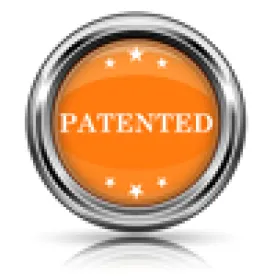Takeaway: There is no per se rule that a petitioner must demonstrate how a petition is not redundant to any prior art and argument previously presented to the Office under 35 U.S.C. § 325(d). Instead, the Board has discretion under this statute to consider whether the same or substantially the same prior art or arguments were previously presented to the Office.
In its Decision, the Board concluded that Petitioner had persuasively demonstrated a reasonable likelihood of showing that claims 6 and 33 of the ’565 patent, which relates to rearview vision systems for vehicles that provide the vehicle operator with scenic information in the direction rearward of the vehicle, are unpatentable. Thus, the Board instituted trial with respect to these claims. The Board was not similarly persuaded as to challenged claims 14, 21-24, 34-38, 43-46, and 49, and therefore did not institute trial with respect to these challenged claims.
The Petition had identified multiple entities, including Valeo, Inc. and Valeo GmbH, as the real parties in interest. But Patent Owner asserted that Petitioner knew or should have known at the time of filing the Petition that Valeo, Inc. had ceased to exist because it had merged with another entity to become Valeo North America, Inc. In view of this and another related assertion, Patent Owner argued that the Petition is fatally deficient because it fails to identify all real parties in interest as required by 35 U.S.C. § 312(a)(2). The Board disagreed, finding that while the Petition was technically in error in that it named Valeo, Inc. rather than Valeo North America, Inc., the Petition was substantively correct in that it identified the real party of interest (because Valeo North America, Inc. is the legal successor to Valeo, Inc.).
Patent Owner also requested rejection of the Petition as raising “substantially the same arguments and prior art as raised in the ’220 IPR” as was the case in Medtronic, Inc., v NuVasive, Inc., Case IPR2014-00487, slip op. at 7 (PTAB Sept. 11, 2014). In reply, the Board pointed out that the cited case was “not precedential and does not set forth a ‘requirement’ that a petitioner must explain adequately why a follow-on petition is not redundant.” Moreover, the Board did not agree with Patent Owner that the references and positions asserted in the Petition are the same or substantially the same prior art or arguments previously presented to the Office. Thus, the Board declined to exercise its discretion under 35 U.S.C. § 325(d) to deny the Petition.
The Board then went on to find that Petitioner had shown a reasonable likelihood of showing that claim 6 of the ’565 patent is unpatentable as having been obvious under 35 U.S.C. § 103 in view of Nissan. In doing so, the Board rejected Patent Owner’s proposed construction of the claim term “image portion,” finding that “the independent claims require at least a portion of an image, but do not preclude the displayed image from including the entirety of the image captured.”
The Board was not persuaded that Petitioner had shown a reasonable likelihood that claims 14, 43, 44, 46, and 49 are unpatentable under 35 U.S.C. § 103(a) as having been obvious over Nissan and Hino; that claims 21-24 are unpatentable under 35 U.S.C. § 103(a) as having been obvious over Nissan, Hino, Aishin, and Wang; that claims 34-38 are unpatentable under 35 U.S.C. § 103(a) as having been obvious over Nissan, Hino, Aishin, and Niles; or that claim 45 is unpatentable under 35 U.S.C. § 103(a) as having been obvious over Nissan, Hino, and Aishin. Among other things, the Board found that Petitioner had not adequately addressed “whether or how a person of ordinary skill in the art would have modified the orientation of Nissan’s rear-facing cameras in view of Hino”; “how the images captured by Nissan’s rearfacing cameras can be mapped to the ground/floor using the calculations taught by Hino, which are intended for downward-facing cameras” or “[t]o the extent that Nissan’s cameras were modified to face downward, [that] they would no longer teach the claim limitations discussed above requiring the recited image capture devices to be directed rearwardly.”
The Board was persuaded that there existed a reasonable likelihood that Petitioner would prevail in establishing that claim 33 is unpatentable over Nissan, Aishin, Niles, Fujitsu, and Honda. As an example, the Board concluded that “it is sufficiently clear that Petitioner is proposing to modify Nissan in view of Aishin (for trajectories), Niles or Fujitsu (for the distance markers), and Honda (for responding to the vehicle’s steering system)” and, “[f]or the same reason, [the Board also was] not persuaded by Patent Owner’s argument that the combination does not disclose said indicia having ‘a form that responds to the rate of turn of the vehicle or to at least one of the vehicle’s steering system, the vehicle’s differential system and a compass’” (emphasis in original).
Valeo North America, Inc.; Valeo S.A.; Valeo GmbH; Valeo Schalter und Sensoren Gmbh; and Connaught Electronics Ltd. v. Magna Electronics, Inc., IPR2014-01203
Paper 13: Decision on Institution of Inter Partes Review
Dated: January 28, 2015 Patent: 7,859,565 B2
Before: Jameson Lee, Phillip J. Kauffman, and Matthew R. Clements
Written by: Clements
Related Proceedings: Magna Electronics Inc. v. Valeo, Inc., No. 2:13-cv-11376-DRG (filed on Mar. 28, 2013) (E.D. Mich.); IPR2014-00220; IPR2014-00227; IPR2014-01206; IPR2014-00222; IPR2014-01204; IPR2014-00221; and IPR2014-01208



 />i
/>i
